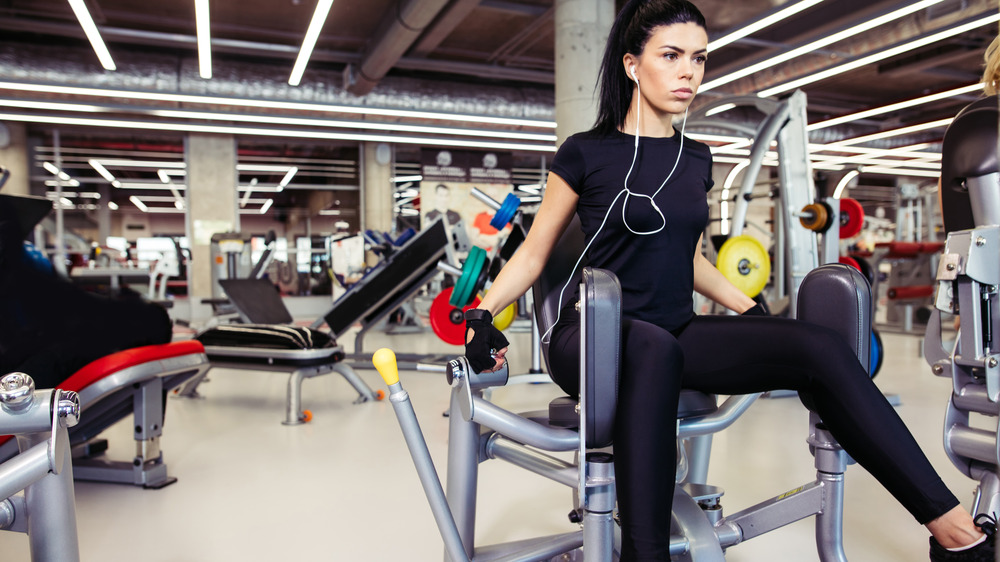Here's Why You Can Stop Using The Thigh Machine At The Gym
If you're trying to build strong legs you may be tempted to put all the leg machines in the gym into your circuit. But you may want to think twice before doing so. At least one of them may not be doing you any good, and could cause harm if performed incorrectly.
The thigh machine, actually called the hip abduction/adduction machine, is the culprit. It's that piece of equipment that requires you to sit with your knees bent at 90 degrees and move them in an inward or outward motion, against pads that provide resistance.
The problem is that there is nothing equivalent to that motion in real life, so the body isn't created to sustain those movements. Nick Timminello, owner of Performance University in Baltimore, told Shape, "The muscles the machines work are primarily stabilizers for when you're standing or moving around. When you do a step-up or lunge, you're working them, plus all the other stuff."
Because the movement on the thigh machine is pretty simple, people can often lift a lot of weight. But that weight gets translated to the lower spine and can cause injury, according to HuffPost. It can also injure the iliotibial band so badly that it dislocates the knee cap, a big risk for a questionable machine.
Here's what to do instead to work your hips and thighs
To lower the risk of injury, while really training those hip and thigh muscles, experts suggest using exercises that incorporate looped resistance bands. Try placing the band around your ankles and take 20 steps to each side (via Women's Health).
Alternatively, try the abduction/adduction movement but use the cable machine. The balance required to stand and keep your body erect will work muscles throughout your legs and hips. Place the loop of the cable machine around your ankle and stand up straight. Lift the leg with the cable attached up to the three-o'clock position, and repeat. To work the inner thigh, lift the leg in the opposite direction, toward the nine-o'clock position (via Shape).
You can still get strong, lean legs, but there are better, much safer ways to do so in the gym than risking injury on the thigh machine.


